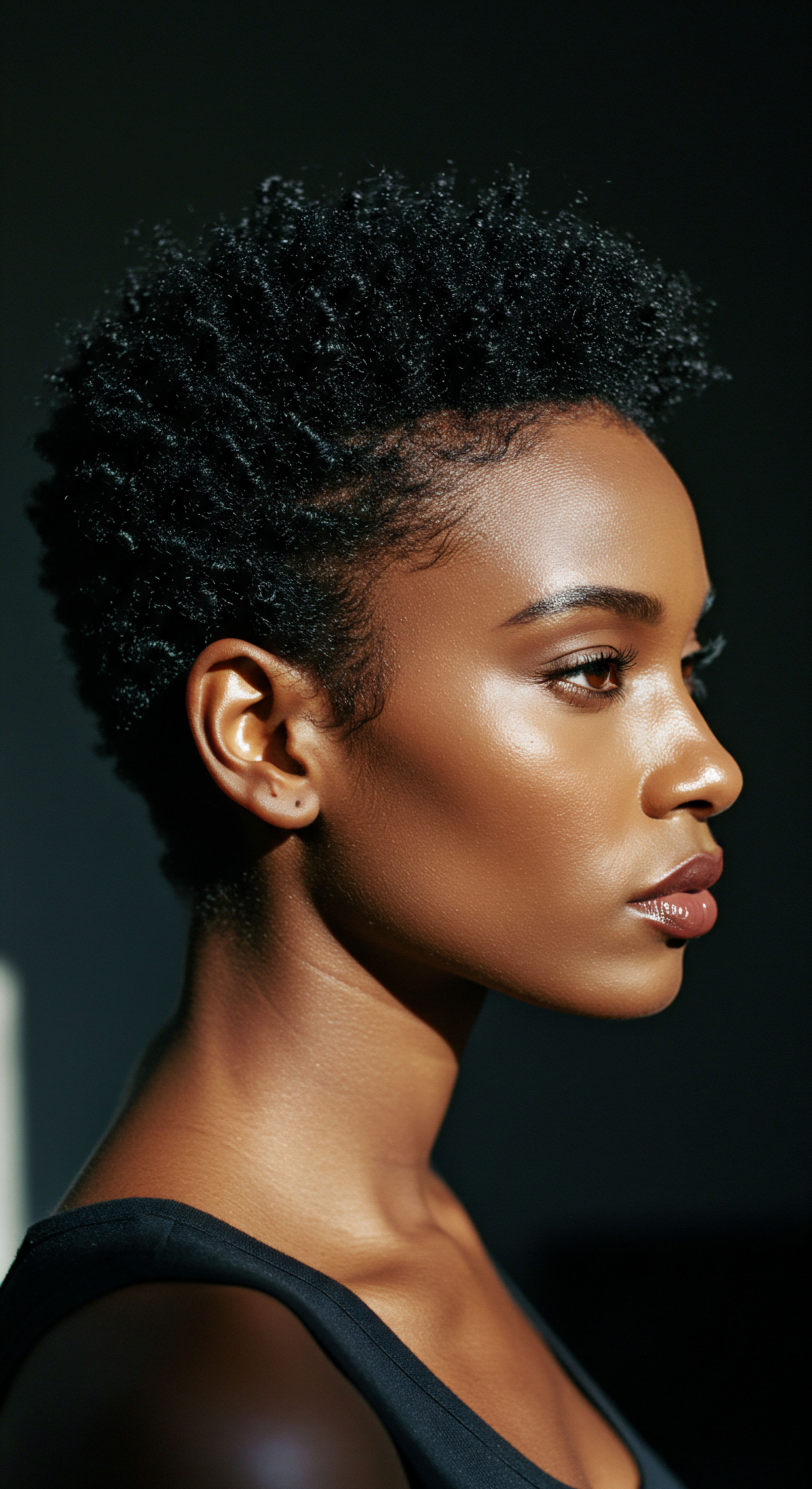
Roots
The whisper of antiquity often carries with it secrets, not just of grand empires and forgotten languages, but of the very personal rituals that shaped daily existence. How did the guardians of ancient civilizations, with their profound understanding of the natural world, safeguard the delicate outer layer of their hair? This inquiry leads us back to the foundational elements of hair health, to the protective strategies that predate modern chemistry, yet held a deep resonance with the living world around them. Our exploration begins at the very structure of hair, the cuticle, and the universal need to shield it from environmental forces.
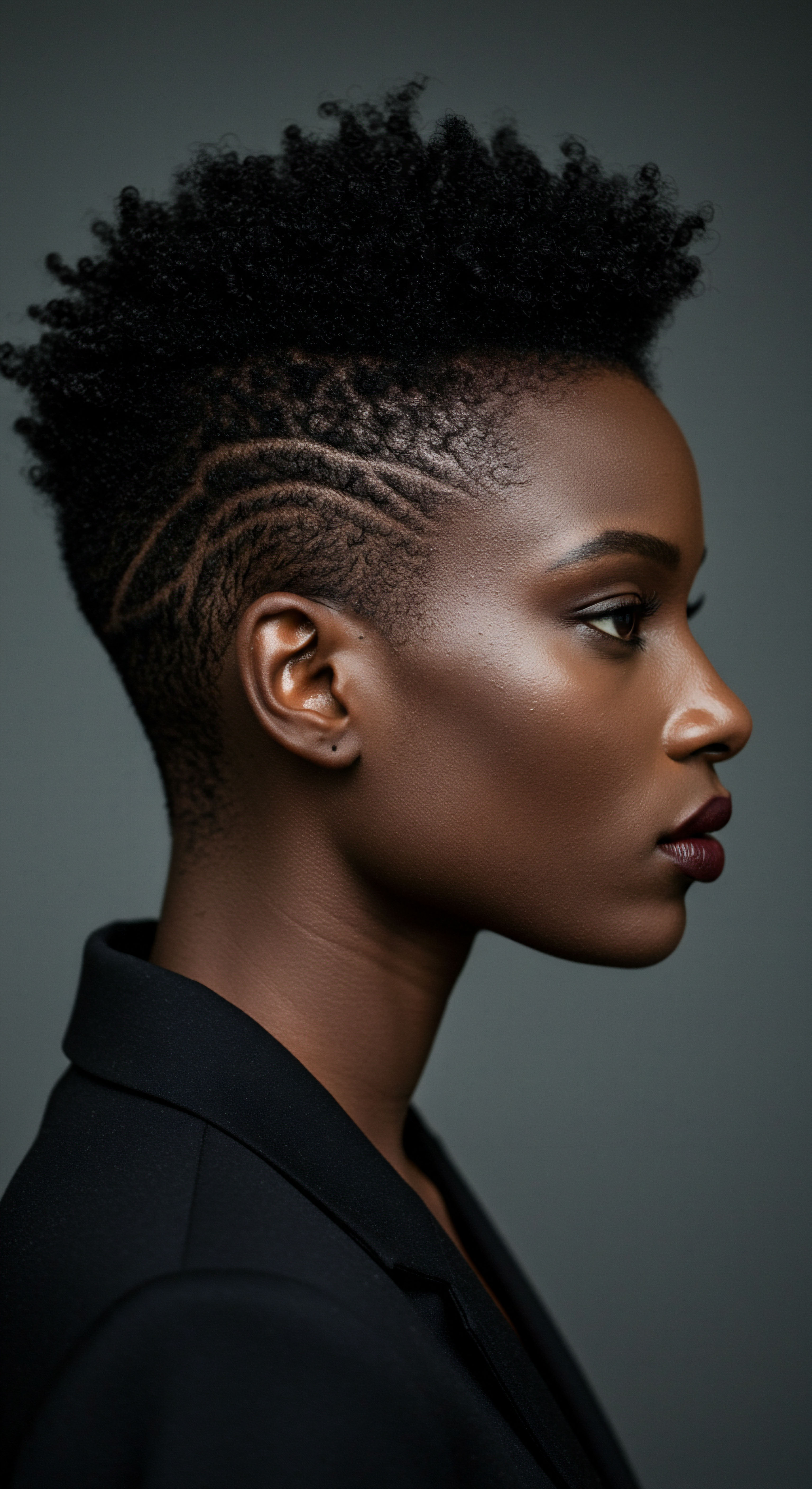
Hair Anatomy and the Cuticle’s Shield
At its core, hair is a complex biological structure, a testament to the body’s ingenious design. Each strand, a slender protein filament, extends from the scalp, a visible marker of health and often, identity. The outermost layer, the Cuticle, forms a protective shield. Think of it as a series of overlapping scales, much like shingles on a roof, all facing downwards towards the hair’s end.
This arrangement, when smooth and tightly closed, grants hair its luster, its ability to reflect light, and its defense against external aggressors. When these scales are lifted or damaged, the inner cortex, responsible for hair’s strength and elasticity, becomes vulnerable, leading to dryness, breakage, and a dull appearance.
Ancient peoples, without the aid of microscopes, possessed an intuitive understanding of this vulnerability. Their observations of hair’s response to sun, wind, and water guided their practices. They recognized that hair, like skin, needed a barrier, a way to keep its internal moisture intact and to deflect environmental harm. This foundational knowledge, passed down through generations, formed the basis of their protective measures, long before the scientific term “cuticle” entered our lexicon.
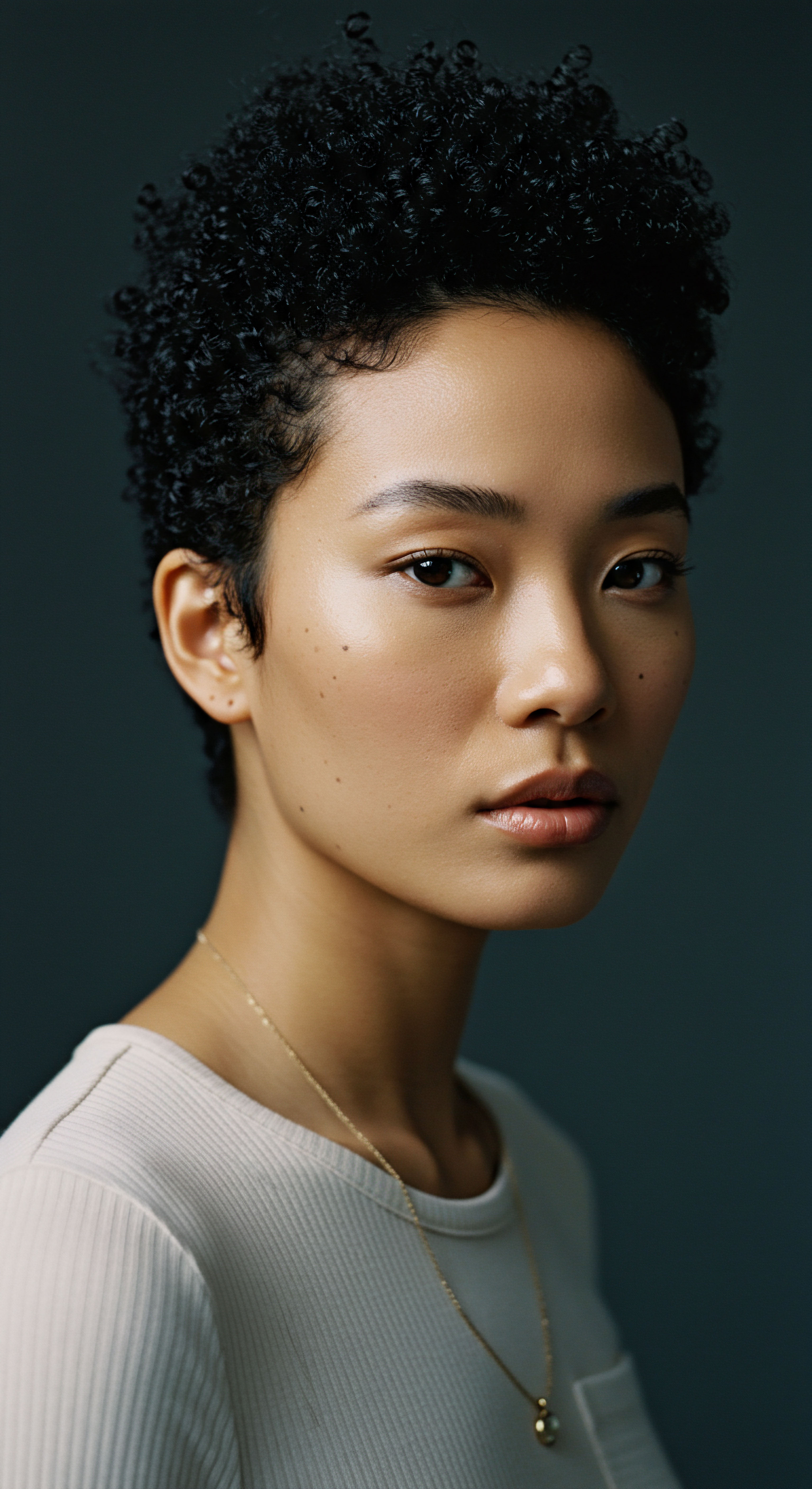
Early Protective Strategies
The earliest forms of hair protection were likely simple, direct responses to the environment. Shelter from harsh sun, covering the head with fabrics or leaves, would have been among the first steps. As communities developed, so too did their methods.
The application of natural oils, fats, and clays emerged as primary defenses. These substances, readily available in their local environments, provided a physical coating, a literal seal for the hair’s surface.
Ancient peoples understood hair’s fragility, using available natural resources to form a protective barrier against environmental challenges.
For instance, in the arid landscapes of ancient Egypt, where the sun’s intensity could be particularly harsh, oils derived from plants such as Castor Oil and Almond Oil were highly valued for their moisturizing properties. These oils were not simply for aesthetic appeal; they served a crucial function in shielding hair from environmental damage. Similarly, beeswax was employed as a styling agent, offering hold and shine while simultaneously forming a protective layer over the hair. These early formulations, while seemingly simple, reveal a sophisticated application of natural emollients to preserve hair integrity.
| Element Oils and Fats |
| Purpose Moisturizing, sealing, shine |
| Examples Castor oil, almond oil, olive oil, animal fats |
| Element Clays and Earths |
| Purpose Cleansing, detoxifying, mineralizing |
| Examples Rhassoul clay, bentonite clay |
| Element Plant Extracts |
| Purpose Nourishing, conditioning, coloring |
| Examples Henna, amla, shikakai, neem |
| Element Protective Styles |
| Purpose Minimizing exposure, preventing tangles |
| Examples Braids, wigs, head coverings |
| Element These elemental resources formed the initial line of defense for hair in ancient times. |

The Essential Lexicon of Ancient Hair Care
Understanding the materials and methods used by ancient civilizations helps us build a lexicon of their hair care wisdom. Beyond the scientific terms, we recognize the inherent properties of their chosen ingredients. For example, Emollients were present in their oils and fats, softening and smoothing the hair.
Humectants, drawing moisture from the air, might have been found in ingredients like honey. Even the concept of a PH Balance, though not explicitly known, was indirectly addressed through the use of acidic rinses like vinegar or alkaline clays.
The recognition of hair as a living fiber, susceptible to damage but also capable of resilience, underpins these early practices. The methods employed were often slow, deliberate, and deeply connected to the cycles of nature, a stark contrast to the rapid-fix solutions of modern times. This patient approach allowed for a deeper understanding of hair’s needs and how best to support its natural defenses.

Ritual
Stepping beyond the fundamental understanding of hair’s physical vulnerability, we turn to the daily rhythms and ceremonial acts that safeguarded ancient strands. These were not merely utilitarian applications; they were often steeped in cultural significance, transforming mundane tasks into meaningful rituals. How did these consistent, often communal, practices provide tangible protection for hair cuticles, weaving care into the very fabric of life? Our journey now explores the intentional application of knowledge, the careful selection of tools, and the collective wisdom that shaped ancient hair care.

Daily Rinses and Conditioning Practices
The cleansing and conditioning of hair in antiquity were far removed from our contemporary shampoo-and-conditioner routines. Instead, civilizations relied on naturally occurring substances that offered both purifying and nourishing qualities. In ancient Egypt, citrus juice mixed with water was used for cleansing, followed by the application of almond oil to condition the hair. This two-step process provided a gentle wash and then a rich, emollient layer to smooth and protect the cuticle.
The Greeks and Romans, with their access to abundant olive groves, made Olive Oil a cornerstone of their hair care. This nutrient-rich oil was applied by both men and women to maintain soft, shiny hair. Often, herbs such as rosemary and lavender were infused into the oil, enhancing its properties and adding a pleasant aroma. The act of massaging these warm oils into the scalp was not only believed to stimulate growth but also served as a moment of relaxation, connecting physical well-being with mental calm.
Ancient hair care was a thoughtful process, where daily rituals with natural elements built layers of protection.
Across the world, in ancient India, the principles of Ayurveda guided hair care, emphasizing a holistic approach. Ingredients like Amla (Indian gooseberry), Shikakai, and Neem were used for cleansing and nourishing the scalp. These herbs, often combined with oils like coconut or sesame, created potent treatments designed to promote growth and strength, while also providing a conditioning effect that helped seal the cuticle. The consistent application of these herbal oil treatments, known as Abhyanga, involved massaging warm oils into the scalp and hair, stimulating circulation and deeply nourishing the follicles.

Protective Styles and Adornments
Beyond topical applications, ancient civilizations mastered the art of protective styling, a practice particularly prevalent in cultures with textured hair. These styles served multiple purposes ❉ aesthetic expression, social signaling, and most importantly, physical protection for the hair.
- Braids ❉ In African cultures, braids have a history dating back to at least 3500 BCE. These intricate styles, including cornrows and plaits, were not only visually striking but also served as practical protective measures. By keeping hair bundled and contained, braids minimized exposure to environmental damage, reduced tangling, and prevented breakage. They were also used to signify social status, marital status, wealth, kinship, and religion within various tribes.
- Wigs ❉ Ancient Egyptians extensively used wigs, dating as early as 3400 BCE. These were not merely fashion statements; wigs provided a significant layer of protection for the natural hair underneath, shielding it from the harsh desert sun and, notably, from lice. Elite Egyptians, both men and women, often shaved their heads or kept their hair cropped, wearing elaborate wigs made from human hair or plant fibers, often set with beeswax and animal fat.
- Head Coverings ❉ While less elaborate than wigs, the consistent use of head coverings, such as scarves and wraps, across many ancient societies offered a simple yet effective way to shield hair from dust, sun, and other environmental elements. This practice helped maintain hair’s moisture and prevented external damage.

Tools and Their Purposeful Use
The implements used in ancient hair care were designed with an understanding of hair’s delicate nature. Combs, often crafted from materials like ivory, wood, or fish bones, were used not just for detangling but also for evenly distributing oils and balms. The careful selection of materials suggests a recognition that harsh tools could cause mechanical damage.
For styling, early curling tongs, heated over fires, were used in Babylonian and Assyrian civilizations. While these posed a risk of heat damage if overheated, their existence points to a desire for styled hair that also considered methods of manipulation. The Romans later developed curling irons known as Calamistrum. These tools, combined with the application of oils and waxes, aimed to achieve desired styles while offering a degree of physical protection by binding the hair strands together.
The consistency of these rituals, from daily oiling to periodic protective styling, formed a comprehensive system of cuticle defense. This was a patient, hands-on approach, recognizing that hair health was a continuous process, not a one-time treatment.

Relay
Moving beyond the visible practices, how did ancient civilizations’ hair care extend into a deeper understanding of hair’s resilience and vulnerability, connecting it to the very rhythms of life and the environment? This section delves into the subtle interplay of biology, cultural belief, and resourcefulness that informed advanced protective measures, uncovering insights that resonate even in contemporary trichology. Here, we examine the profound knowledge held by our ancestors, not just in applying remedies, but in shaping a lifestyle that honored hair’s inherent structure.
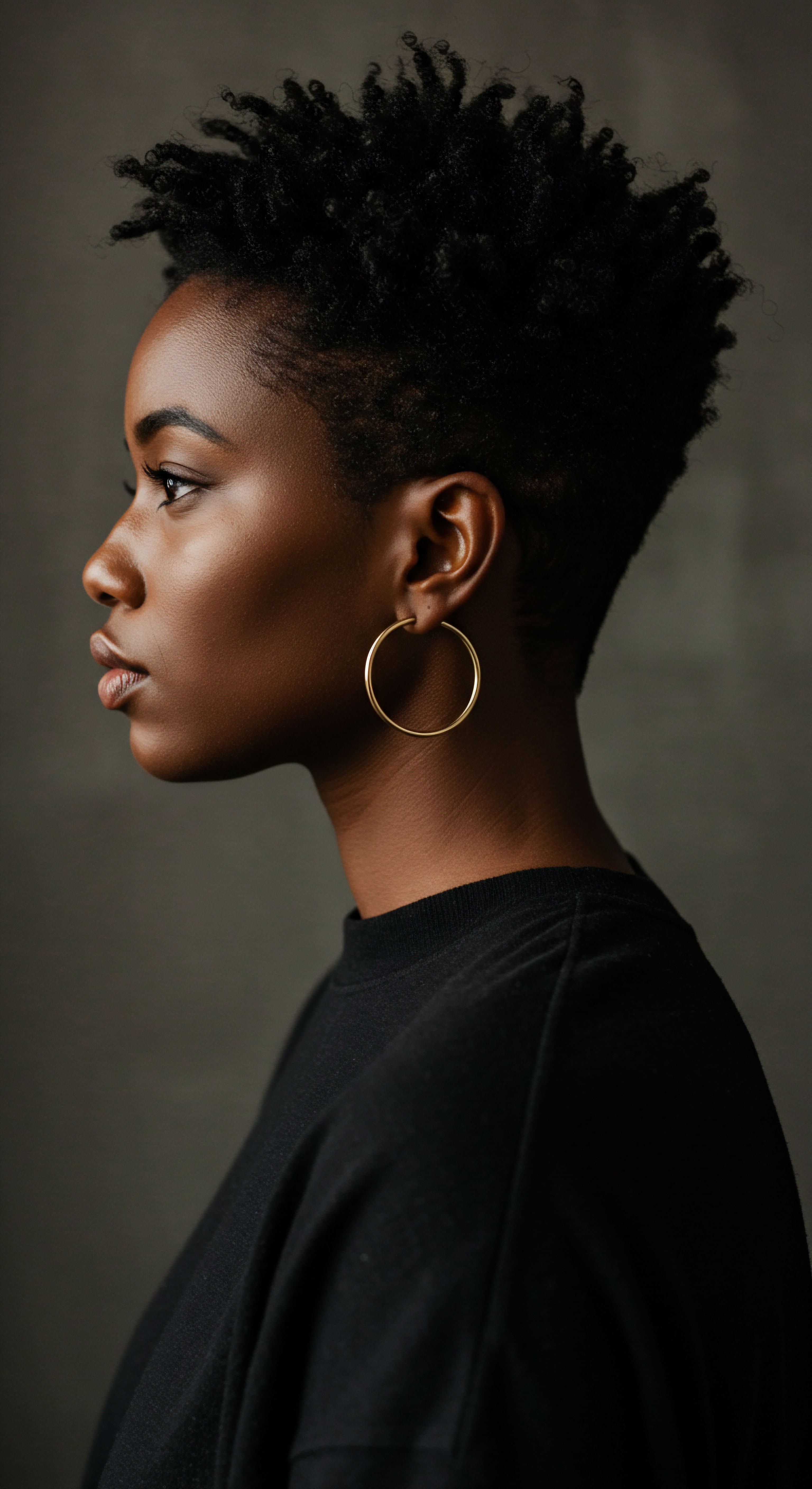
The Biomechanics of Protection
While the term “cuticle” was unknown, ancient civilizations intuitively grasped the biomechanics of hair protection. They understood that a smooth, cohesive outer layer was paramount for healthy strands. This understanding was expressed through their use of ingredients that coated, smoothed, and sealed the hair shaft.
Oils like Castor, Almond, and Olive were not merely moisturizers; their lipid content formed a physical barrier, effectively mimicking and augmenting the hair’s natural sebum. This external layer helped to flatten the cuticle scales, reducing friction and preventing moisture loss, two critical factors in maintaining cuticle integrity.
The practice of massaging oils into the scalp, common in Ayurvedic traditions, served a dual purpose. It stimulated blood circulation to the hair follicles, nourishing the hair from its root, while also distributing natural oils along the hair shaft, coating and conditioning the strands. This systematic application helped ensure consistent coverage, reinforcing the cuticle’s protective function along the entire length of the hair.

Clay’s Ionic Shield
One particularly fascinating aspect of ancient hair protection involves the use of various clays, a practice that stretches across continents from North Africa to the Americas. The Berber people of Morocco utilized Rhassoul Clay, while Native American tribes employed specific mineral clays for cleansing and purifying both hair and scalp. Modern scientific analysis reveals the underlying mechanism ❉ clay minerals carry a negative electrical charge. Toxins, impurities, and excess oils, often carrying a positive charge, are drawn to and bind with the clay through this ionic attraction.
This process allows for effective cleansing without stripping the hair’s natural moisture barrier, preserving the delicate cuticle. Clays like bentonite, rhassoul, and kaolin also provide essential minerals such as silica, magnesium, and calcium, which can strengthen hair. This ancient wisdom, now validated by contemporary science, highlights a deep, empirical understanding of natural chemistry.
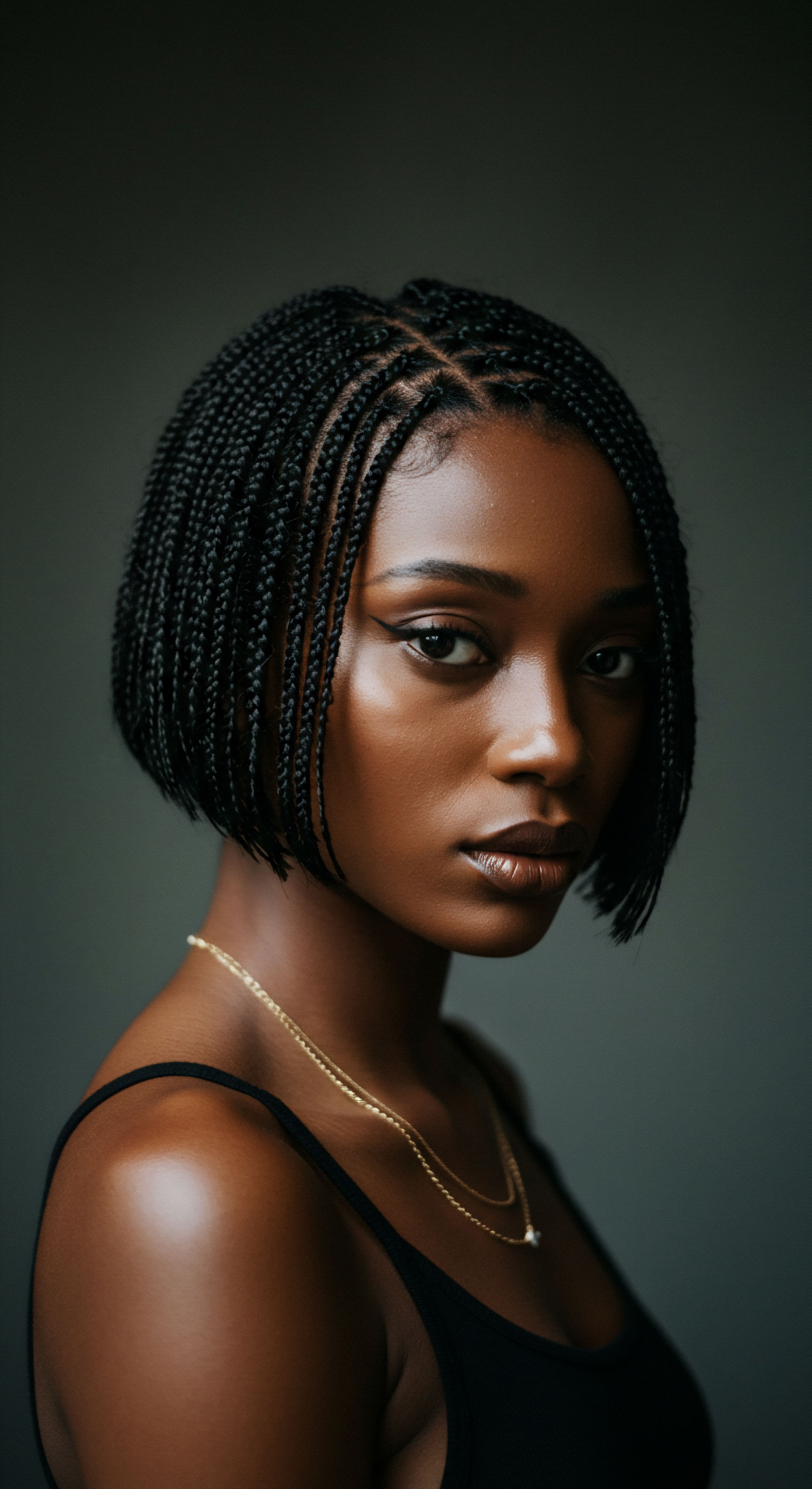
Cultural Mandates for Hair Health
Beyond physical applications, cultural beliefs and societal norms played a significant role in dictating hair care practices that inherently protected the cuticle. In many societies, hair was more than an adornment; it was a symbol of status, identity, and even spiritual connection. This elevated status often translated into meticulous care routines.
For instance, in ancient African societies, hair braiding was not only a practical protective style but also a profound cultural statement. Braids could communicate a person’s age, marital status, wealth, or tribal affiliation. The time-intensive nature of braiding meant that hair was handled with care, often involving communal grooming sessions that fostered social bonds. This consistent, gentle handling, combined with the physical protection offered by the braided structure, minimized external damage to the cuticle.
Consider the Himba People of Namibia, who reside in one of the planet’s most challenging environments, marked by intense sun and scarce water. Their traditional hair care, involving the application of Otjize, a mixture of ochre, butterfat, and sometimes aromatic resins, serves as a compelling case study of environmental adaptation and cuticle protection. This distinctive red paste not only provides sun protection for the scalp and hair but also acts as a natural sealant, coating the hair strands and effectively safeguarding the cuticle from the drying effects of the sun and wind.
The consistent reapplication of otjize forms a cumulative protective layer, demonstrating a long-standing, culturally embedded practice that directly addresses environmental stressors on hair health. This example showcases how deep cultural practices, born of necessity and passed down through generations, developed sophisticated, albeit non-scientific, methods for cuticle preservation.
The cultural emphasis on hair health in ancient India, particularly within Ayurveda, also demonstrates a deep connection between internal well-being and external appearance. Ayurvedic texts, thousands of years old, outlined the use of natural ingredients not just for cleansing but for nourishing the scalp and promoting overall hair health. This holistic perspective meant that diet, lifestyle, and even stress management were considered integral to hair vitality, recognizing that healthy hair originates from a healthy body.

The Unseen Science of Ancient Remedies
Many ancient remedies, though lacking modern scientific classification, possessed properties that directly benefited the hair cuticle. Henna, widely used in the Middle East and South Asia, was valued not only as a dye but also for its conditioning properties, strengthening hair and adding shine. The lawsone molecule in henna binds to the keratin in hair, forming a protective layer that can smooth the cuticle.
Similarly, the use of various plant extracts like Yucca Root by Native American communities, or Rice Water in China and Japan, offered natural saponins and starches that cleansed gently and provided a subtle conditioning effect. These substances helped to maintain the hair’s natural pH and moisture balance, crucial for keeping cuticle scales flat and healthy.
Ancient civilizations, through careful observation and generations of accumulated wisdom, developed highly effective strategies for protecting hair cuticles. Their methods, ranging from topical applications of natural oils and clays to intricate protective styles and holistic wellness practices, reveal a profound respect for hair as both a biological entity and a cultural symbol. The continuity of these practices, with many natural ingredients still valued today, underscores the enduring power of ancestral knowledge in the pursuit of healthy, resilient hair.

Reflection
As we close this exploration of ancient hair care, a quiet wisdom lingers. The meticulous practices of civilizations long past, from the sun-drenched lands of Egypt to the verdant landscapes of India, offer more than just historical footnotes. They present a compelling testament to humanity’s enduring connection with the natural world and an innate understanding of care. Our ancestors, without the benefit of scientific instruments or laboratories, perceived hair’s delicate nature and devised ingenious methods to safeguard its very essence.
Their methods, often slow and deeply intertwined with daily life and cultural identity, remind us that true care is not about quick fixes but about consistent, thoughtful attention. Perhaps the deepest lesson from these ancient guardians of the cuticle is the profound respect they held for their hair, seeing it not merely as an accessory, but as a living part of themselves, worthy of profound protection.

References
- Bloomsbury Publishing. (2021). A Cultural History of Hair in Antiquity.
- Broadley, D. & McElwee, K. J. (2020). A “hair-raising” history of alopecia areata. Experimental Dermatology, 29(3), 208-222.
- Corson, R. (2004). Fashion in Makeup ❉ from Ancient to Modern Times. Peter Owen Publishers.
- Draycott, J. (2018). Hair loss as facial disfigurement in Ancient Rome?. In Skinner, P. and Cock, E. (eds.) Approaching Facial Difference ❉ Past and Present (pp. 105-135). University of Glasgow.
- Gharu, S. & Trevedi, V. (2016). Ancient hairs ❉ Need for morphological analysis of prehistoric and extant Mammals. International Journal of Applied Research, 2(9), 1014-1017.
- Harlow, M. & Laurence, R. (2022). A Cultural History of Hair ❉ In Antiquity (Vol. 1). Bloomsbury Publishing.
- Homan, P. G. (2019). Baldness ❉ A brief history of treatments, from antiquity to the present. Pharmaceutical Historian, 49(1), 24-30.
- Pliny the Elder. The Natural History.
- Stephens, J. (2008). The Archaeology of Hair and Grooming in Roman Britain. Archaeopress.
- Weitzel, M. A. (1998). A New Method for the Analysis of Human Hair ❉ A Morphological Case Study of Five Sample Populations (Master’s thesis). Oregon State University.